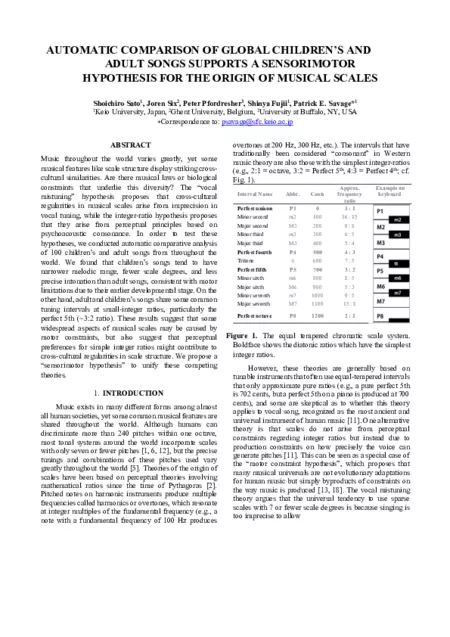Author version | Version of record | Further information
Publication type: Articles in peer reviewed conference proceedings
Abstract: Music throughout the world varies greatly, yet some musical features like scale structure display striking crosscultural similarities. Are there musical laws or biological constraints that underlie this diversity? The “vocal mistuning” hypothesis proposes that cross-cultural regularities in musical scales arise from imprecision in vocal tuning, while the integer-ratio hypothesis proposes that they arise from perceptual principles based on psychoacoustic consonance. In order to test these hypotheses, we conducted automatic comparative analysis of 100 children’s and adult songs from throughout the world. We found that children’s songs tend to have narrower melodic range, fewer scale degrees, and less precise intonation than adult songs, consistent with motor limitations due to their earlier developmental stage. On the other hand, adult and children’s songs share some common tuning intervals at small-integer ratios, particularly the perfect 5th (~3:2 ratio). These results suggest that some widespread aspects of musical scales may be caused by motor constraints, but also suggest that perceptual preferences for simple integer ratios might contribute to cross-cultural regularities in scale structure. We propose a “sensorimotor hypothesis” to unify these competing theories.
Cite this article:
@inproceedings{ho2018automatic,
title={Automatic comparison of global children’s and adult songs},
author={Shoichiro Sato, Joren Six, Peter Pfordresher, Shinya Fujii and Patrick Savage},
year={2019},
proceedings ={Proceedings of the 9th Folk Music Analysis Conference (FMA 2019)}
}

